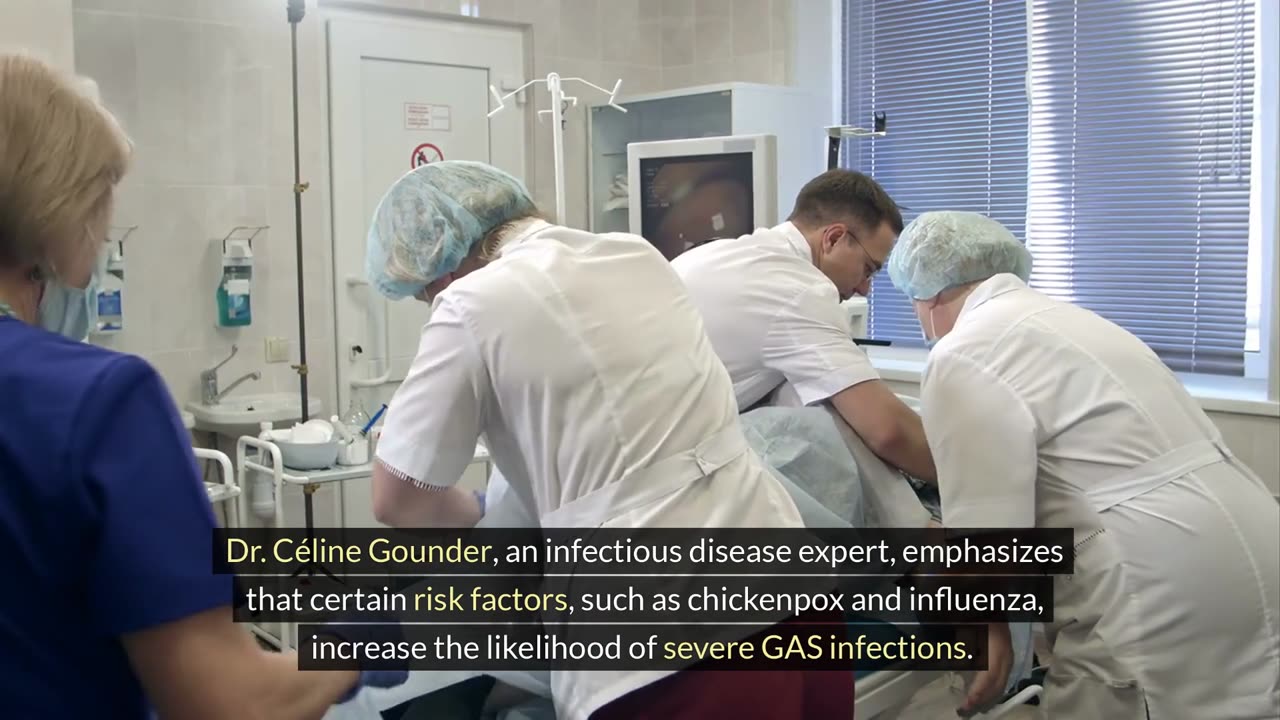Premium Only Content

STSS A Deadly Bacterial Infection is Spreading in Japan: What You Need to Know About STSS
## A Rising Threat in Japan
A potentially deadly bacterial infection known as streptococcal toxic shock syndrome (STSS) is rapidly spreading in Japan, causing alarm and raising questions about its causes and prevention. Japan's National Institute of Infectious Diseases issued a warning in March about the increase in STSS cases, and as of June 2, the country has reported 977 cases in 2024 alone—surpassing last year's total of 941 cases. This surge highlights the urgent need for awareness and action to combat this life-threatening condition.
## Understanding STSS: The Silent Killer
### What is STSS?
Streptococcal toxic shock syndrome (STSS) is a rare but serious bacterial infection caused by toxins produced by Group A Streptococcus (GAS), also known as Streptococcus pyogenes. These bacteria are commonly associated with mild illnesses like sore throats and skin infections. However, when they invade the bloodstream or lungs, they can release toxins that trigger severe, rapidly progressing symptoms.
### Symptoms to Watch For
STSS can develop quickly, turning a mild infection into a life-threatening emergency. Initial symptoms often include fever, chills, muscle aches, nausea, and vomiting. As the infection progresses, patients may experience pain and swelling in their arms and legs. Within 24 to 48 hours, low blood pressure typically develops, leading to organ failure, increased heart rate, and rapid breathing. The Centers for Disease Control and Prevention (CDC) warns that even with treatment, STSS can be fatal, with a mortality rate as high as 30%.
## Causes and Risk Factors
### The Role of Group A Streptococcus
Group A Streptococcus (GAS) is the culprit behind STSS. While GAS is commonly found in cases of strep throat and minor skin infections, it can also cause more severe conditions when it enters the bloodstream or deep tissues. Dr. Céline Gounder, an infectious diseases expert, explains that these severe infections are less common but significantly more dangerous, with high mortality rates.
### Identifying Risk Factors
Anyone can contract STSS, but certain factors increase the risk. These include:
- **Age**: Adults over 65 are more susceptible.
- **Skin Injuries**: Cuts, burns, or surgical wounds can provide entry points for bacteria.
- **Chronic Health Conditions**: Diabetes, alcohol use disorder, and immunosuppressive conditions heighten the risk.
- **Recent Infections**: Chickenpox and influenza can predispose individuals to severe GAS infections.
## Global Impact and Trends
### Rising Cases Worldwide
Japan is not alone in experiencing an increase in GAS infections. Since late 2022, several countries, including the United Kingdom, Ireland, France, the Netherlands, and Sweden, have reported rising rates of severe GAS infections. This global trend underscores the need for ongoing infectious disease surveillance and control.
### The Importance of Vaccination
Preventative measures, such as vaccination against varicella zoster virus (which causes chickenpox) and influenza, can reduce the risk of severe GAS infections. Vaccination helps by minimizing the chances of secondary infections that could escalate into STSS.
## Prevention and Protection
### Personal Hygiene and Care
Preventing STSS starts with basic hygiene and wound care. Keep cuts and abrasions clean and covered, and seek medical attention for any signs of infection. Good personal hygiene, such as regular handwashing, can also reduce the risk of spreading and contracting infections.
### Antibiotics as a Preventive Measure
For individuals who have been in close contact with someone suffering from a severe GAS infection and who are at higher risk (e.g., immunocompromised individuals, pregnant women, or those with open wounds), prophylactic antibiotics may be recommended to prevent infection.
### Awareness and Early Detection
Awareness is crucial in combating STSS. Recognizing the early symptoms and seeking prompt medical attention can make a significant difference in outcomes. Healthcare providers should be vigilant and consider the possibility of STSS in patients presenting with compatible symptoms, especially those with known risk factors.
## Conclusion: Vigilance and Preparedness
The rise in STSS cases in Japan and globally is a stark reminder of the ever-present threat of infectious diseases. While STSS is rare, its rapid progression and high mortality rate make it a serious public health concern. By understanding the causes, recognizing the symptoms, and taking preventive measures, we can reduce the risk and impact of this deadly infection.
### Stay Informed and Protected
In the fight against infectious diseases, knowledge and preparedness are our best defenses. Stay informed about the latest health updates, practice good hygiene, and seek medical advice when necessary. If you found this article helpful, please like, share, and subscribe to our channel for more health insights and updates. Join the conversation in the comments below and let us know your thoughts and experiences. Together, we can stay ahead of the threats and keep our communities safe.
-
 32:37
32:37
Anthony Pompliano
3 days ago $6.32 earnedWill Amazon & Microsoft Buy Bitcoin?!
70.9K4 -
 17:40
17:40
VSiNLive
1 day agoHow a TWEET Made Steve Fezzik DOUBLE DOWN on this Vikings Rams Bet Amidst the California Wildfires
57.8K4 -
 22:20
22:20
DeVory Darkins
21 hours ago $14.26 earnedGavin Newsom Suffers HUMILIATING Blow by Trump
53.9K89 -
 24:15
24:15
Stephen Gardner
1 day ago🚨New Evidence DESTROYS Gavin Newsom! Trump HITS BACK HARD!!
95.3K304 -
 14:59
14:59
TimcastIRL
8 hours agoH1-B Immigration ABUSED, You Cannot Import Your Way Out Of US Cultural Decay
78.5K39 -
 15:21
15:21
Forrest Galante
22 hours agoWorld's Deadliest Predator Up Close (Private Tour)
62.6K4 -
 2:49:49
2:49:49
BlackDiamondGunsandGear
18 hours agoBDGG live with DLD After Dark
30.5K2 -
 27:43
27:43
hickok45
11 hours agoSunday Shoot-a-Round # 263
24.3K9 -
 15:17
15:17
This Bahamian Gyal
21 hours agoTHEY REALLY hate Donald and Melania Trump!
16.6K25 -
 8:37
8:37
GBGunsRumble
21 hours agoGBGuns Range Report 11JAN25
12.6K4